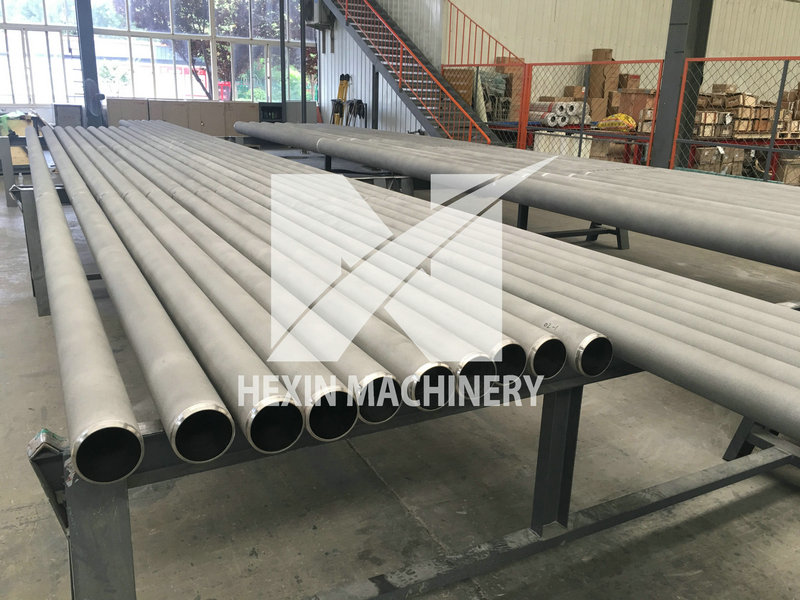
The quality control of centrifugal casting rolls should first control the centrifugal casting charge to improve the purity of steel water; if it is an alloy material with a high melting point, it is best to crush it before adding it to the furnace.
In the process of centrifugal casting, it is necessary to control the temperature, time and other factors, which are the most basic conditions for obtaining high-quality centrifugal casting rolls. In other respects, if the high temperature strength and coating strength of the end cap sand mold can be improved, the quality of centrifugal casting rolls will be effectively improved.
The slag inclusion defect in the bonding layer occurs between the outer molten steel and the core molten iron. To solve the problem of the slag inclusion defect in the bonding layer, it is necessary to start from the raw materials, and control the molten iron smelting, centrifugal casting process, and ladle management. The reasons for the analysis are as follows:
1. The quality of the outer layer of molten steel
The slag inclusions in the bonding layer of centrifugal casting high-speed steel rolls mainly come from mold slag, and the easily oxidized metal in molten steel is also an important cause of slag inclusions in the bonding layer of centrifugal casting rolls.
2. Centrifuge stop temperature
If the stopping temperature is too high, the outer layer of molten steel will collapse, and the collapsed part of the molten steel is prone to secondary oxidation and slag inclusion defects; if the stopping temperature is too low, glass slag is added to prevent oxidation of the inner surface of the molten steel, which will also lead to centrifugal casting rolls. Bonding layer slag inclusion defect.
3. The interval between the outer molten steel and the core molten iron
If the interval is too long or too short, it will cause slag inclusion defects in the bonding layer of centrifugal casting rolls.
4. The pouring temperature of molten iron in the core
If the pouring temperature is too high, the refractory alloy elements in the outer layer of molten steel will enter the molten iron of the core, and the total amount of carbides in the core structure, especially the bonding layer, will increase, and the strength will decrease sharply; if the pouring temperature is too low, the centrifugal casting roll will be poorly bonded.
5. Others
The strength of the coating on the roller body is involved in the molten iron; the sand mold of the end cap is not strong enough, and there is damage, resulting in sand inclusion; the glass slag is not well covered, and the molten iron at both ends is seriously oxidized.
The control measures are:
1. Charge control
Control the charge and improve the purity of steel water.
2. Outer layer molten steel smelting
High melting point alloy materials such as ferroniobium and ferrotungsten should be crushed first and then added to the furnace. At the same time, glass fragments are added to the furnace during smelting to prevent the oxidation of molten steel, so as to ensure clean slag removal in the furnace and slag removal outside the furnace, and improve the purity of molten steel. .
3. Core molten iron treatment
Using spheroidizing treatment, after fully spheroidizing, after the molten iron is treated, it is necessary to ensure the standing time to make the slag in the molten iron fully float, and then use a slag aggregation agent to remove the slag, and pay attention to protection to prevent secondary oxidation.
4. Centrifugal casting process
In the process of centrifugal casting, it is necessary to control the stopping temperature, core filling temperature and interval time.
5. Other aspects
Improve the high temperature strength of the end cap sand mold so that it does not lose sand during the rotation process; clean the molten iron ladle to prevent the residue from entering the molten steel during use; improve the strength of the coating.

